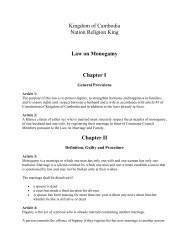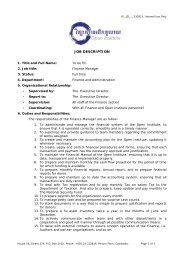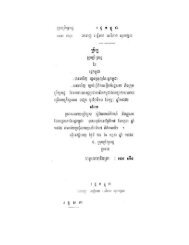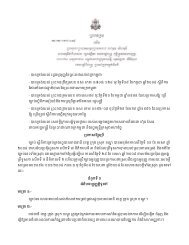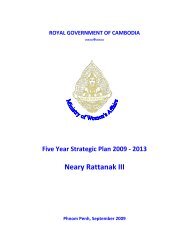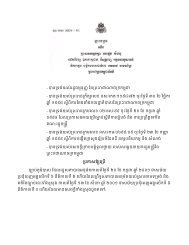Education Education An approach to some basic Indicators for ...
Education Education An approach to some basic Indicators for ...
Education Education An approach to some basic Indicators for ...
Create successful ePaper yourself
Turn your PDF publications into a flip-book with our unique Google optimized e-Paper software.
34 Catalog of Indica<strong>to</strong>rs <strong>Education</strong> age by the population of the age group that officially corresponds <strong>to</strong> the given level of education, and multiply the result by 100. GER by gender: females as % of males -‐ Girls’ gross enrolment ratio divided by that of boys, as a percentage. The GER is the number of children enrolled in a schooling level (primary or secondary), regardless of age, divided by the population of the age group that officially corresponds <strong>to</strong> that level. Disaggregation by Orientation program Divide the number of students enrolled in each type of secondary education programme (classified by orientation) by <strong>to</strong>tal enrolment in secondary education in a given year, and multiply the result by 100. Where: %E_{s}^{t} Percentage of students enrolled in orientation s of secondary education in school year t E_{s}^{t} Number of students enrolled in orientation s of secondary education in school year t n Number of orientations of secondary education Priority: Yes Indica<strong>to</strong>r developed: Yes Local/International: Local and International Kind of indica<strong>to</strong>r: On going Data source/s: School register, school survey or census <strong>for</strong> data on enrolment by level of education. Population censuses or estimates <strong>for</strong> school-‐age population normally obtained from the central statistical office. Challenges: GER can exceed 100% due <strong>to</strong> the inclusion of over-‐aged and under-‐aged pupils/students because of early or late entrants, and grade repetition. In this case, a rigorous interpretation of GER needs additional in<strong>for</strong>mation <strong>to</strong> assess the extent of repetition, late entrants, etc. Linked <strong>to</strong> policy: National <strong>Education</strong>al plan of all areas of education (ESP, Non-‐Formal <strong>Education</strong>) Other comments: A high GER generally indicates a high degree of participation, whether the pupils belong <strong>to</strong> the official age group or not. A GER value <strong>approach</strong>ing or exceeding 100% indicates that a country is, in principle, able <strong>to</strong> accommodate all of its school-‐age population, but it does not indicate the proportion already enrolled. The achievement of a GER of 100% is there<strong>for</strong>e a necessary but not sufficient condition <strong>for</strong> enrolling all eligible children in school. When the GER exceeds 90% <strong>for</strong> a particular level of education, the aggregate number of places <strong>for</strong> pupils is <strong>approach</strong>ing the number required <strong>for</strong> universal access of the official age group. However, this is a meaningful interpretation only if one can expect the under-‐aged and over-‐aged enrolments <strong>to</strong> decline in the future <strong>to</strong> free places <strong>for</strong> pupils from the expected age group. Quality Standards. Data can be disaggregated by Sex, Level of education, Location (urban/rural), type of institution (public/private), and Orientation of education program (<strong>for</strong>mal/non-‐<strong>for</strong>mal/technical-‐vocational)





